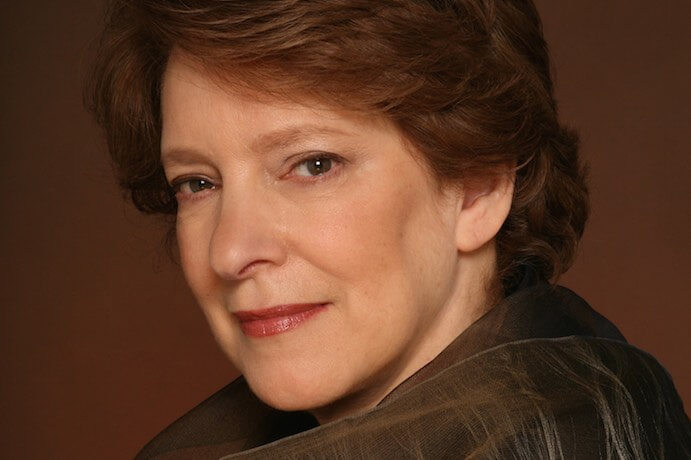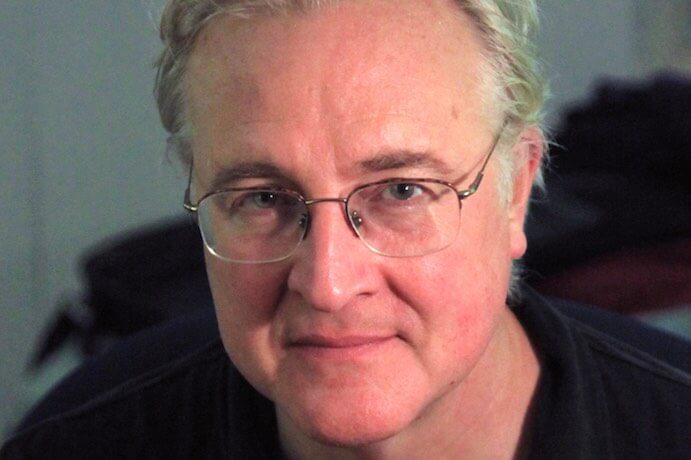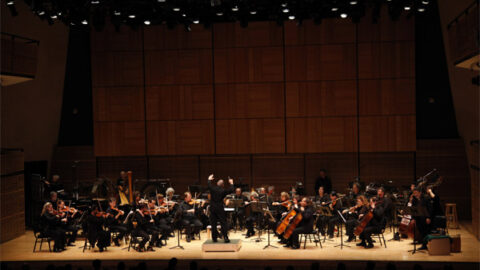I’ll admit I was skeptical to attend a concert of “contemposcary” music; I am a grown woman after all. On the Friday before Halloween 2016, the American Composers Orchestra, conducted by George Manahan, brought a fascinating array of sounds to the ears of listeners at Carnegie’s Zankel Hall, ranging from the familiar shrieking strings of Bernard Herrmann’s Psycho Suite (1960) to the comical moans and groans of David Del Tredici’s Dracula (1999), a setting of Alfred Corn’s poem “My Neighbor, the Distinguished Count” for orchestra and soprano soloist. Most impressive was the world première of Judith Shatin‘s Black Moon (2016) for orchestra and conductor-controlled electronics. Unlike the other pieces on the program, which each contribute a musical element to a preexisting narrative, Black Moon tells its own wordless story through a pliable, enigmatic interaction of electronics and acoustic instruments. Although at times the concert dipped into musical laziness and theatrical desperation, Shatin’s work made the experience well worthwhile.
During the opening to Black Moon, the electronics executed by Maxwell Tfirn swirled and pulsated in a truly creepy way, giving the impression that the sounds were boring into our skulls, without the usual visual cues as to what was producing them. As musical lines gradually seeped in, the anxiety heightened as it became unclear which sounds were electronic and which were “real.” Digitized droplets and streaks of sound shimmered over and under stilted woodwind arpeggios, jaunty woodblocks, and blaring brass. The interchange between rippling electronics and fluttering orchestra instruments became murkier and murkier as the piece progressed, leading up to a lovely array of extraterrestrial sounds and an enigmatic ending that left me thinking how much I’d love to see the film this piece might accompany. Shatin wrote in the program notes that the 15-minute-long piece is meant to explore the phenomenon of a black moon, the somewhat rare occurrence of a second new moon within a month: “I am fascinated by the many effects of the moon on the earth–helping it stay in orbit and acting on the ocean tides.”

Bernard Herrmann’s soundtrack to Psycho depends on focused sonic repetition to build suspense in the absence of the images it accompanies. An element of familiarity throughout the work resulted in occasional laughter from the audience, particularly during the passage of high-pitched violin shrieks. However, in the absence of explicit plot via words or images, the music was able to stand on its own. Even despite a few rough notes from the violins, the piece sounded exceptional in the hands of the American Composers Orchestra, leaving me breathless as the music cut off right as the sense of unease became utterly hair-raising. Similarly, Paul Moravec’s The Overlook Hotel Suite (2016, another world première) builds and breaks tension in a cinematic manner. Silky violin lines melted over groaning low brass and piano passages as the harp sparkled ironically above. This foreboding mood was broken by a verbal countdown from all musicians before a swingy tune, offering a comedic contrast to the eeriness. The Suite, which was drawn from Moravec’s opera The Shining, was a convincing stand-alone work, and would have stood as a satisfactory end to the concert.

However, David Del Tredici’s Dracula still waited to be heard and cringed through. Whenever I see a lengthy, meaty poem or text in a program note, I fear that the composer will let the abundance of words do the work for them, relegating their own writing to background music rather than writing music that elevates the poetry to multidimensional levels or that could stand on its own. Del Tredici’s efforts with Dracula, for orchestra and soprano soloist, felt flimsy and gimmicky. The undertaking relied heavily on Alfred Corn’s three-page poem, a theremin player dressed as the grim reaper, and embarrassing theatrics that bordered on the offensive when the soprano, Nancy Allen Lundy, was led away on a leash and spiked collar in the conclusion of the work. Lundy herself sang incredibly well, hitting each note, ranging from the D below middle C to the E-flat above high C and all those in between. Her operatic, leapfrogging vocals, along with the whirling theremin, wind machine, and celesta, were the strongest elements in a piece rife with lazy melodic writing and uninteresting harmonies. There is nothing scarier at a contemporary music concert than a composer who condescends to their audience.
























